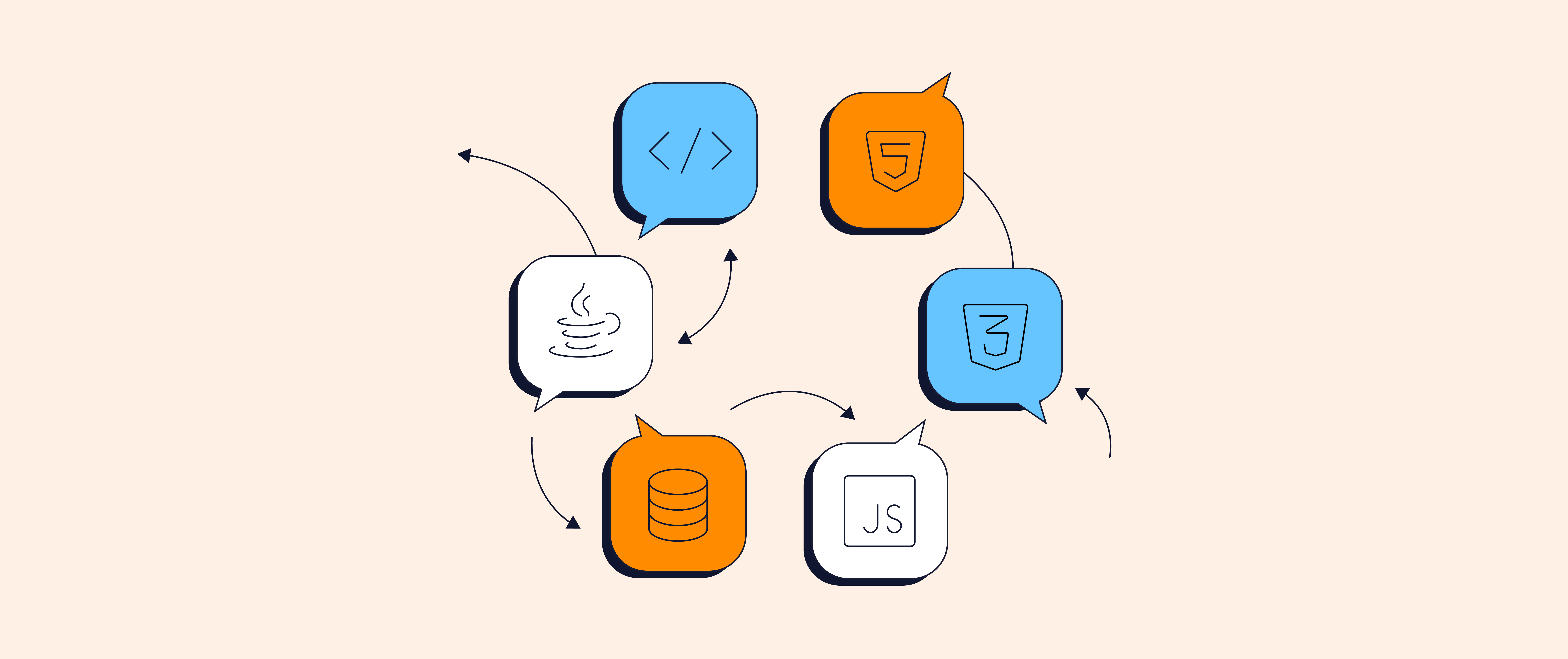First things first: Much like selecting an ice cream flavor or deciding which birthday gift to open first, it’s pretty much impossible to choose the “wrong” programming language to learn. That said, plenty of beginners agonize over which programming language they should learn first. You might be worrying: What if it’s a waste of my time? What if the language becomes outdated? What if I can’t get a job with this language?
With over 600 programming languages out there, these are valid concerns, and it’s easy to get overwhelmed by the sheer volume of choices. People typically have a hard time making a decision when we’re presented with a large number of options, whether we’re talking about ice cream flavors or coding courses. This is a psychological phenomenon that’s often referred to as the “paradox of choice.”
The good news is that we’ve launched a new Codecademy course designed to help you overcome this decision paralysis so you can start learning the right language for you. The free course Choosing a Programming Language will walk you through all of the factors you need to consider when selecting a language. You’ll get to review some of the common starter languages, explore their differences and similarities, and discover beginner-friendly courses that will bring you one step closer to your goals.
Learn something new for free
Once you start coding, it’ll become clear to you why you can’t mess up and pick the “wrong” language. Still doubting your decision-making abilities? Here are a handful of reasons why you really, truly can’t go wrong, no matter which programming language you learn.
Programming languages share concepts
There are certain concepts that show up in all programming languages, like variables, conditionals, loops, lists, and functions. The way that you access and execute those tasks will be different from language to language, but the same principles are at play. In Choosing a Programming Language, you’ll get to see what a code snippet looks like across languages, and we’ll show you side-by-side how different languages can perform the same functions using different coding syntax.
The reassuring thing to keep in mind is that once you’ve got the hang of one programming language, it’ll feel much easier to pick up subsequent languages — regardless of which language you started with. As you learn, focus on the big-picture concepts that you encounter rather than trying to memorize the specific syntax of a language (that’s what Google is for).
Programmers usually need to know several languages
At some stage in your coding journey, you’re going to need to use different languages in order to complete new projects — it’s extremely rare that a programmer would be limited to one singular language. So the more experience you have working with a sampling of languages, the more you can do.
You also don’t need to be an expert in one language before you can dabble in another. For example, you might consider yourself a diehard Pythonista, but occasionally you turn to data science languages like SQL or R. Or you might start learning JavaScript, then pick up PHP because it’s listed as a job requirement for a position you’re applying to. Or perhaps you decide to learn Lua because it’s trendy in your tech circles. (Read this blog to see even more instances when you’d need to add a programming language to your repertoire.)
Learning is a massive part of being a developer, because technology is constantly evolving. You’re not at risk of pigeonholing yourself just because you started with JavaScript instead of Python. What’s important is maintaining a beginner’s mindset and always staying open to trying new languages and tools.
A programming language is just one tool
Think of a programming language as one tool in your toolkit that you can use to develop software. As a developer, it’s your job to know which tool (or programming language) is appropriate for a particular job. So no matter which programming language you decide to place in your proverbial toolbox first, you’ll be adding a valuable and marketable skill that will serve you well in your career.
It’s important to note that there’s way more to being a programmer than understanding every tiny technical nuance to a language (though that doesn’t hurt). Don’t overlook the other “tools” that enable you to do your best work, like your ability to solve problems under pressure, your attention to detail, or your leadership and communication skills.
How to choose a programming language
Ready to start learning how to code? Check out the free Codecademy course Choosing a Programming Language to help find the right programming language for you. We’ll fill you in on the most important factors to consider when choosing a language and even point you in the direction of the right Codecademy courses and skill paths to take.
This could be the first big (but so exciting!) step towards launching a new career in tech or discovering your passion. And whichever programming language you end up choosing, Codecademy has beginner-friendly courses, tutorials, and resources that will help guide you every step of the way.





